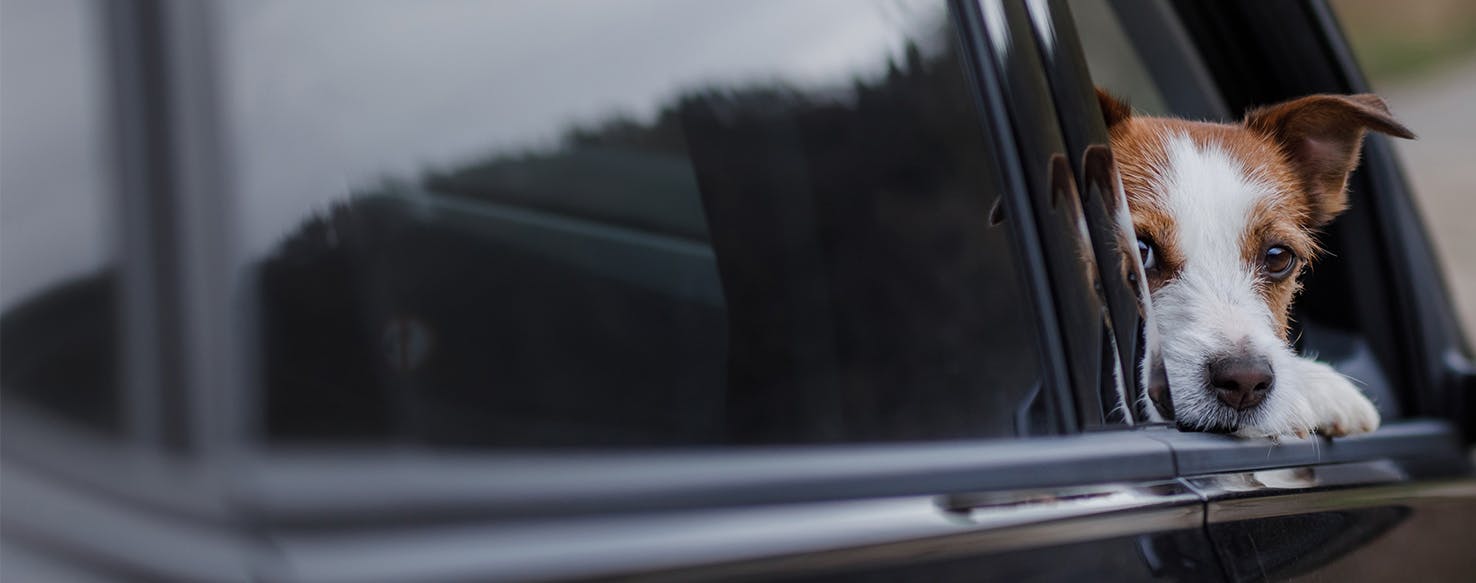- Home
- The Daily Wag!
- Behavior
- Why Do Dogs Get Anxious In Cars

Common
Irregular
Some dogs are born travelers. They love to ride in the
car and go just about anywhere you want to go. Even a spin around the block is
enough to make their entire day complete. But to some dogs, any time they’re in
the car at all, even before it starts moving, anxiety kicks in and the entire
experience becomes unpleasant for both dog and owner—complete with drooling,
barking, whining, pacing, and more. Some dogs may even get car sick. Others are
excited to get in the car, but become nervous once the engine starts.
Why do some dogs get anxious in cars? Is there anything
you can do to help your travel-hating pooch tolerate car rides better?
If your dog hates riding in the car, you may be forced to
leave them at home for some rides, rather than endure a brutal experience and
the potential clean up after your dog gets carsick. But sometimes, you can’t
avoid the trip, especially to the vet or the groomer.
Anxiety presents differently in animals than it does in
humans. Your dog might pace, pant and drool excessively, whine, bark, or
shiver. It’s also possible they may urinate or defecate as a response to
stress.
Your dog might be anxious during the ride because they’re
nauseous. Motion sickness can happen in dogs just the same as humans. If your
dog is nauseous, they might be drooling excessively, yawning, lip smacking, or
whining. If your dog vomits in the car, try to limit their food before getting
in the car. Your vet can also make suggestions for anti-nausea medications
available over-the-counter or by prescription.
A dog might also be nervous due to the sensory overload
they experience in the car. Don’t forget, a dog’s ears and nose are far more
sensitive than ours. For them, the sudden input of so many new smells and
sounds, like the rumble of a car’s engine or the sounds of traffic, can be
overwhelming. And being in a moving vehicle by itself might be frightening. Not
to mention, bumps and turns might send your dog sliding or slipping, which can
make a dog feel insecure.
Your dog may have anxiety in the car because they’re
afraid of going to the vet. If you don’t often take your dog in the car except
for to the vet, they’re going to associate the car with the vet, which may not
be a very pleasant experience. No wonder they’re stressed. If you start taking
your dog to other places—fun places like the dog park or the pet store, your
dog may have a better experience in the car.
Need advice about your pet's health?
Get answers fast from a veterinary professional 24/7 in the Wag! App.
Get Vet ChatA nervous or stressed dog in the car is no fun for anyone.
But there are ways you can work with your dog to make the experience more
positive. For starters, try a harness designed for seat belts, available at
most pet stores. Consider putting your dog in the front seat as well, as dogs,
just like people, tend to be less nauseous when they can see out ahead of them
rather than out the side windows. Some dogs also do better in a crate than
loose in the car. Consider crating your dog during longer car rides, they may
be comforted by the enclosed, familiar space.
You can also work with your dog to make getting into the
car a more pleasant experience. Start by leading your dog to the car, and
reward them for approaching. Gradually increase this effort, even maybe letting
them eat a regular meal in the car. Sit in the car with them and give them
treats and affection. This will help them associate the car with something
positive, instead of something scary or stressful. Once your dog is comfortable
with the car, take short trips, even just down the block and back, and reward
them for a job well done.
Gradually increase the distance you go, and try
taking longer routes to the same places, like the pet store, the park, or a
walking trail. Keep rewarding your dog for remaining calm. Be prepared to be
very patient and consistent. It may take several weeks for your dog to get
accustomed to the routine. You should try to take your dog in the car every
day, even if it’s only for a couple of minutes or a trip around the block.
For many dogs, the only reason they get in the car is to
go see the vet, which is generally not a pleasant experience. If your dog gets
anxious in the car, you can try to encourage your dog to get in and enjoy
themselves just going out more often. Even if it’s only down the block to check
the mail or go to the bank. Your dog may begin to relax and have fun just
getting to come with you.
Other options for reducing your dog’s anxiety may include
purchasing a specially designed vest or shirt, like the ThunderShirt, that acts
like a swaddling blanket for your dog. It creates a steady pressure around them
that may be soothing. Alternatively, you can try to bring a safe chewy treat or
puzzle toy for your dog to focus their attention on.
Going in the car with your dog should be a fun experience. When it’s not, road trips feel like looming nightmares. But there are things you can try to make car rides pleasant. Try positive reinforcement or consult your vet for other ways you can keep your dog calm. And hopefully, you’ll love riding in cars with dogs.
Written by a Border Collie lover Charlotte Perez
Veterinary reviewed by:
Published: 02/15/2018, edited: 01/30/2020
More articles by Charlotte Perez

